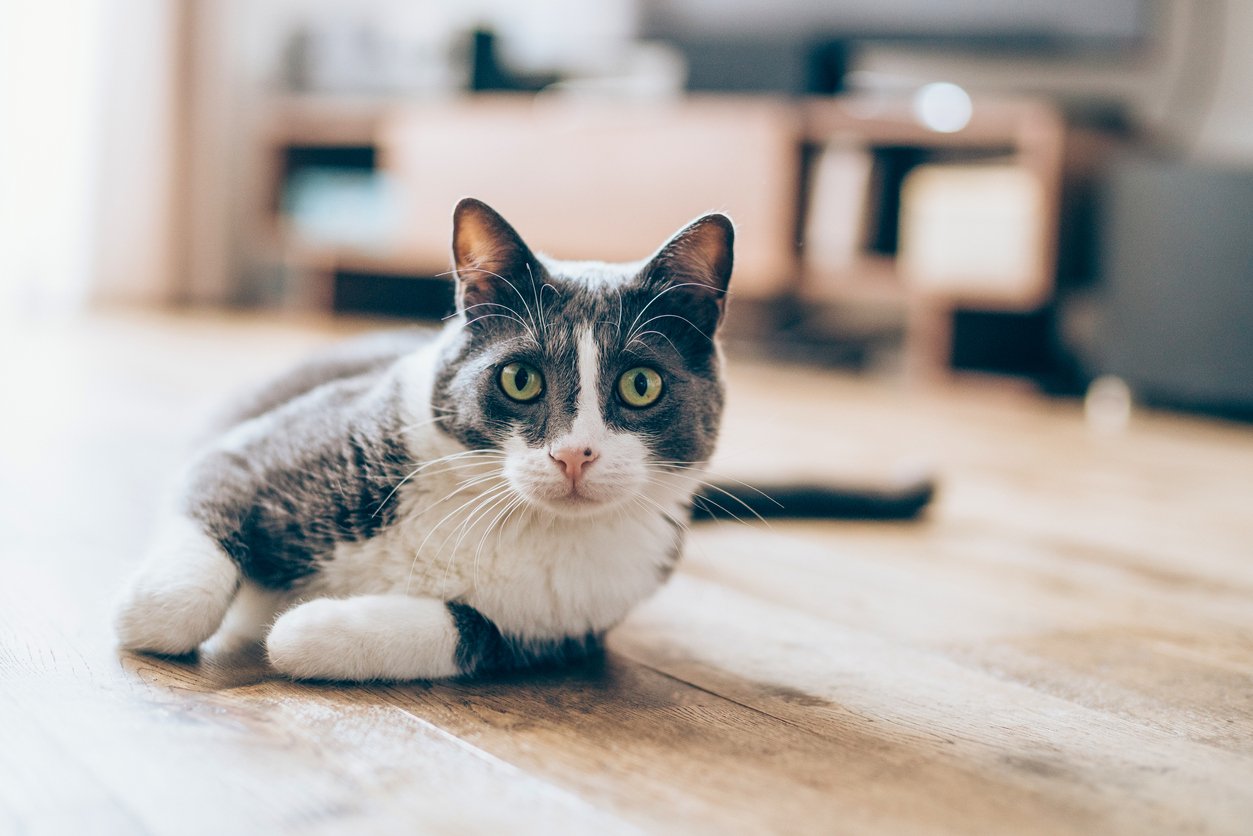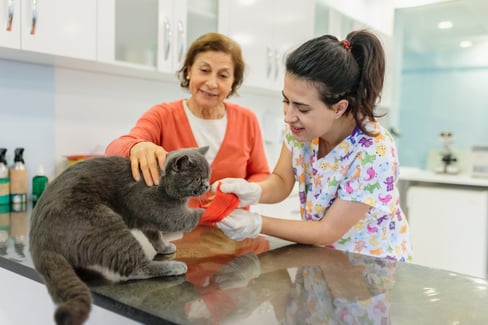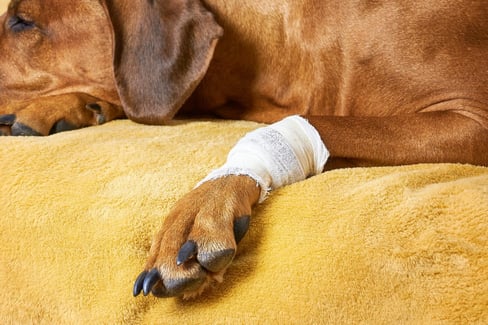Table of Contents
Your cat’s tail is often wafting, waving, and for some kitties, causing chaos! Whether they’re knocking stuff off your shelf or tickling the end of your nose in a Zoom call, our cat’s tails are integral parts of who they are – from balancing to offering them a counterweight to helping with their sense of touch. They even help them communicate with humans and other kitties!
So when your poor kitty experiences a cat tail injury, you just know it’s serious—but what can you do about it? And how do you spot a cat tail injury in the first place? The good news is a cat tail injury isn’t the end of the world, and when you get your sweet kitty the right treatment, they’ll be feline like their old selves in no time.
In this post, we’ll dive into the ins and outs of a cat tail injury, so you’re prepared to tackle these kinds of injuries in a snap.
Cat Tail Injury Symptoms to Spot
Our cats aren’t always easy to read. Their coy, sometimes sensitive personalities can lead to challenges in noting changes, such as after a cat tail injury. That’s why it’s important to know how to spot injuries, so you can get your furry friend the help they need.
Signs and symptoms of cat tail injuries include, but are not limited to:
- Inactivity of the tail (for example, a cat who usually wafts and waves their tail around suddenly stops)
- Discomfort moving the tail
- Sudden aggression, especially when the tail is approached or touched
- Having difficulty urinating or defecating
- Bleeding
- Loss of hair
Since cat tail injuries can vary widely, you may see one or more of these signs, or none at all. In general, cats should be handled with care when investigating possible tail injuries to prevent further harm. Getting close to an aggressive cat might also be dangerous for you, the examiner, so use tools like a soft blanket or towel to gently lift and hold them, and if you’re really unsure of what is going on with your kitty, don’t be afraid to give the vet a call.
Causes of a Cat Tail Tip Injury
Cat tail injuries can be wide-ranging. So you could say searching for the causes of a cat tail tip injury can prove to be a bit of a cat-chall. That said, cat tail injuries usually come down to a few common causes that most cats encounter at some point in their lives.
Causes of cat tail injury can range from moderate to severe, including:
- Catfights
- Diseases or infections
- Motor vehicle accidents
- Insect or animal bites
- Falls or other in-home accidents
- Outdoor accidents (such as a cut or scrape from debris outside)
You can see from the list above that the causes of cat injuries can truly range, but many can be attributed to unsupervised interaction with other animals as well as hazards in and out of the home.
The best way to prevent cat tail injury in the first place is to ensure your home is safe and free of things like debris and your kitty is limited to high-up places. Outside, you can mitigate danger by keeping your kitty’s vaccinations up to date and avoiding letting them wander in unchecked areas around the neighbourhood.
Common Cat Tail Injury Diagnosis
While cats have nine lives, they don't have nine tails in reserve. That said, cat tail injuries are quite common. These injuries can range from minor cuts and abrasions to fractures and sprains. While some cat tail injuries may seem minor, they can still cause problems for your pet if left untreated.
That’s why it’s important to consult your vet for a cat tail injury diagnosis, no matter how small. Even just a call can make all the difference in your kitty’s recovery from a tail injury.
With that in mind, let’s review the most common cat tail injuries your sweet feline is most likely to encounter in their lives.
Diagnosis #1: Cat “Tail-Pull” Injury
Before we talk about what a cat “tail-pull” injury is, you may be wondering what is hiding under all that fur in the first place. Let's take a moment to have a quick cat-natomy lesson.
Cats' tails are made up of caudal vertebrae and voluntary muscles that are held together by ligaments and tendons. It attaches to the body in a place called the tail head. The sacrum connects the tail to the lower back vertebrae and is the first caudal vertebra.
Check out the diagram below to see how these structures fit together to form your kitty's tail.
As the name implies, tail avulsion (or "tail-pull") is the separation of a caudal vertebra from its adjacent caudal vertebra or sacrum while maintaining the continuity of nearby skin and tissues. That means that the tail is often strained internally, and that there is nerve damage to the sacral nerve roots, but that there aren't always external wounds like broken skin.
Because the neuromuscular tissues in the region are damaged and not functioning as normal, "tail-pull" can lead to different levels of dysfunction in the pelvic limbs, bladder, and rectum, leading to incontinence and balance problems.
Diagnosis #2: Fractures, Strains, and Trauma to the Tail
A cat’s tail is made up of many small bones that are connected by tendons and ligaments—it’s how they are able to articulate their tails in such varied ways, after all!
And when trauma occurs to these structures, it can spell trouble for your kitty. Types of trauma that can occur when a cat's tail is broken or twisted suddenly or in the wrong direction include:
- Fractures
- Strains
- Dislocations
- Sprains
Trauma like this may occur if your cat was hit by a car or fell from a high place in the home. Cats who suffer from these kinds of injuries need immediate veterinary care to reduce pain and swelling before the injury worsens.
While all of these injuries are considered traumatic cat tail injuries, they are all slightly varied in what actually happens to your pet. Consult the table below for a breakdown of each.
|
Type of Traumatic Cat Injury |
What It Is |
|
Fracture |
A bone breaks (or fractures) when it's bent or impacted beyond its flexibility. It is important to note that there are different types of breaks and the severity is usually determined by the type and extremity of the impact that the bone endured. |
|
Strain |
Strains are caused by stretching or tearing of tendons. |
|
Dislocation |
A dislocation occurs when your cat bones move out of position within a joint due to an injury. This can happen to a cat tail at the base or connection point to the body. |
|
Sprain |
Sprains happen when ligaments are damaged by injury. |
Remember—your cat’s tail is a complex structure made up of 18 to 23 bones, as well as muscles, tendons, and ligaments that connect the vertebrae. The tail also contains a large network of blood vessels and nerves. This is why it is so crucial to get medical attention if you suspect any of the above traumas to your cat’s tail.
Diagnosis #3: Abrasions to the Tail
Abrasions, or scrapes, are the most common tail injury in cats. Abrasions are caused by a cat coming into contact with something sharp or rough, such as an object in their environment like carpet tacks or rough concrete, or another animal. The cat’s skin may break and there may be bleeding in some cases.
Abrasions to the tail are common in cats and can occur for many different reasons. The table below shows a few common reasons behind this kind of injury.
|
Common Causes of Abrasions to the Tail |
Description |
|
Bite Wound |
Cats are very territorial and will often fight with their own or other cats in their territory. These fights can result in injury to the tail. A cat will bite another cat on the back of the neck or on the rump area as they try to escape. This may leave deep puncture wounds that require stitches and antibiotics. |
|
Scratches |
When a cat falls off a high place such as a fence or tree branch, the fall may cause scratches or wounds in the tail area. They can also come into contact with a sharp object like a wire fence when outdoors, and that can also cause a scratch. |
|
Self-Inflicted |
Cats who suffer from skin allergies may scratch themselves repeatedly, and this can result in scratches and abrasions to the tail. Cats with fleas may also experience intense itching, leading to self-inflicted biting of their tails. |
If your cat has an abrasion on their tail, watch them closely for signs of pain and discomfort. If they seem to be limping or favoring one side of their body, take them to the vet immediately. You can dress the wound at home if it is small and not bleeding excessively, otherwise, take your kitty to the vet right away. Good wound care can avoid a more serious outcome like an infection later on.
3 Effective Cat Tail Injury Treatments
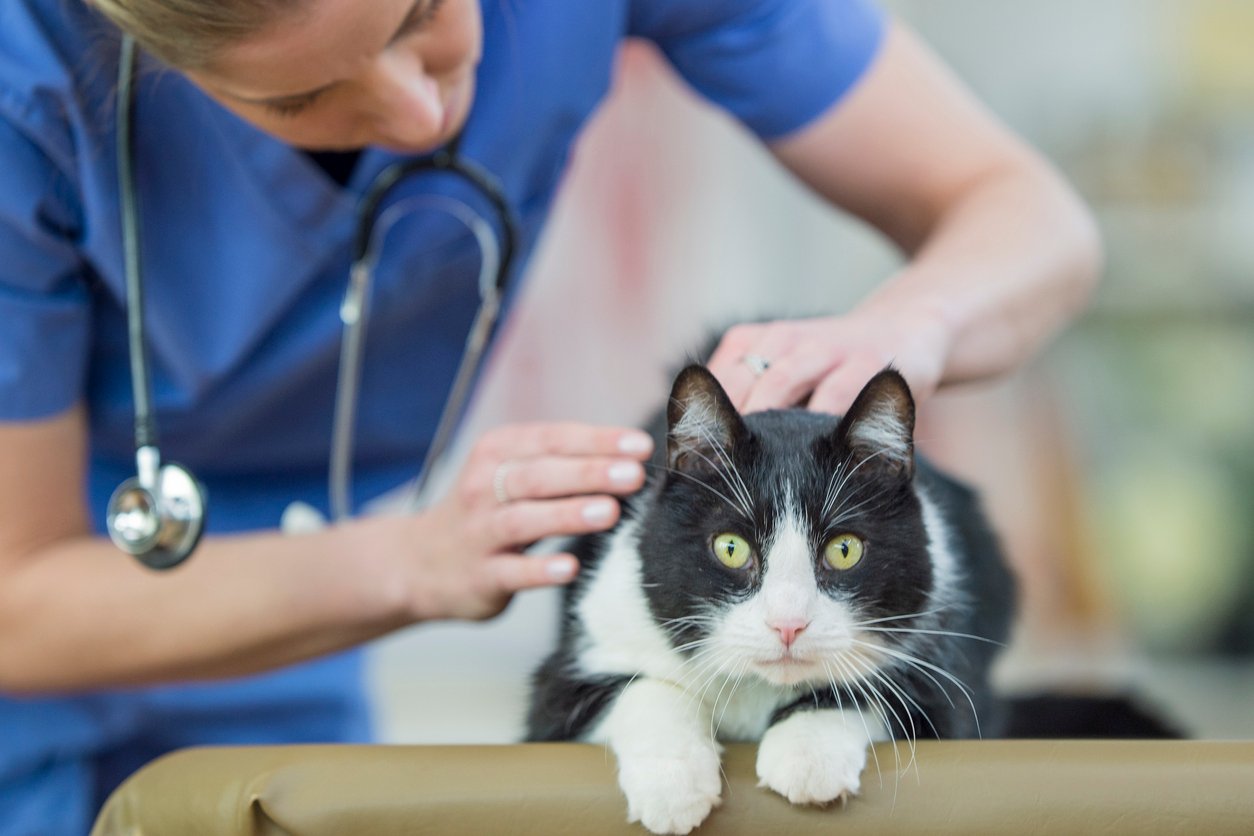
Cat tail injuries are common and can be painful for your cat. Fortunately, most injuries can be treated with minor interventions.
If your cat is injured, it is important to take them to the vet or animal hospital immediately. Even if the injury does not seem serious, there may be internal damage that will only be discovered during an X-ray or other diagnostic tests.
The three most common treatments for cat tail injury problems are typically broken into 3 categories:
- Medications (for pain, infection, or else wise)
- Surgery
- Joint Supplements
Medications
If your cat has a tail injury, it's important to get them the right treatment. Cats don't like to show their pain, but they can still feel it, even if they're not showing any outward signs. That’s why your vet may prescribe a type of medication to help control the pain, infection, inflammation, and other outcomes from a cat tail injury.
There is a wide variety of cat tail injury treatments that rely on medications to get your cat feeling better such as:
- Pain medications like NSAIDs
- Antibiotics
- Topical creams and treatments
- Antifungal treatments
Pain medications like NSAIDs (nonsteroidal anti-inflammatory drugs) are good at reducing pain and inflammation. They can be given orally or applied topically. Topical creams containing steroids or nonsteroidal anti-inflammatory medications can also help with pain and swelling.
Antibiotics can be used in cases of infection or when there's evidence that bacteria are present in the wound area. Antifungal treatments are sometimes necessary as well, particularly when there's evidence of ringworm or fungal infection in the wounds.
If you're concerned about your cat's tail injury, contact your veterinarian for advice and treatment options.
Surgery
It doesn’t happen often, but sometimes cat tail injuries can be very serious and require surgical intervention. If your cat has a tail injury, you must immediately take him to a veterinarian to treat the wound. In severe cases of cat tail pull injury or fractures where blood vessels and nerves are damaged, then your cat’s tail needs surgery.
Usually, this is a simple procedure where the vet repairs damaged structures, such as reconnecting the nerves and blood vessels. In most cases, stitches are used to close the incision.
In cases of really serious cat tail injury problems, a procedure called a caudectomy can remove the dysfunctional tail entirely. If the tail is not expected to regain mobility or sensation, amputation may be a viable option. If a cat can't raise its tail, it may get in the way during trips to the litter box and create an infection issue or simply an odor problem. Not to mention, if their tails are too heavy for them to hold up on their own, they might continue to damage nerves in that region of the spinal cord and suffer further cat spine problems.
After surgery, your vet will bandage the cat tail injury up and provide some post-op care for your kitty. Check for infection daily for signs of redness or swelling around the incision site.
Cat Joint Supplements
As you have already read, cat tail injuries can be very painful and even debilitating for your cat. If your cat has suffered a tail injury, it is important that you seek veterinary care as soon as possible. However, there are some things you can do at home to help your cat recover from a cat tail injury.
One of the most effective treatments for a cat's tail injury is glucosamine and chondroitin supplements. These supplements are available over the counter at most pet stores or online. They can be given to cats of any age and can help heal the injured area so that your cat can eventually regain full mobility in their tail.
A glucosamine and chondroitin supplement can help improve your cat's mobility after such an injury by reducing inflammation and pain. As with any other medical condition, it's important that you consult your vet before giving your pet any type of medication, especially if you're not sure whether or not he needs it.
And what's the power in these ingredients? And what else helps a cat tail injury? Check out a quick explanation in the table below to see how components
|
Ingredient |
Benefit |
|
Glucosamine |
Helps maintain healthy joints and connective tissue and improves the elasticity of joints. |
|
MSM |
Promotes healthy skin and fur, supports a healthy immune system and helps with inflammation. |
|
Chondroitin |
Supports the health of joint cartilage and helps maintain its elasticity, flexibility, and resiliency. |
One of the best cat joint supplements out there that you can trust? Integricare's line of pet joint supplements.
We have two options depending on your cat tail injury needs:
- For mild injuries, TRI-ACTA for Pets is perfect for helping ease and speed up recovery.
- For post-operative surgery recovery and severe injuries where surgery is not needed, TRI-ACTA H.A. for Pets is a helpful blend of joint-supporting ingredients that features the addition of hyaluronic acid.
TRI-ACTA H.A. for Pets
Our maximum strength formula is optimally designed to accelerate the formation of cartilage, minimize inflammation, expedite the healing process, and improve joint conditions.

Q&A
What Can Cat Strain Tail Injuries Lead To?
Cat strain tail injuries can result in a number of conditions that affect their mobility, cat health, and quality of life. A strain is when muscles or tendons are stretched or torn beyond normal capacity, and cat “tail-pull” injury is when a traumatic cat strain tail injury occurs.
“Tail-pull” or cat strain tail injury can lead to:
- Urinary and fecal incontinence
- Pain
- Loss of tail movement
For some cats, "tail-pull" can cause mild or partial tearing of nerves, while other cases are more severe and have increased nerve damage. The good news is that most cases are more mild and very manageable.
Do Cat Tail Injuries Heal on Their Own?
If your cat has suffered a minor injury to their tail, it may heal on its own. However, if the injury is more severe, you should take your cat to the vet immediately. The veterinarian will be able to diagnose the problem and prescribe treatment accordingly.
In most cases, cats tend to have minor injuries that do not require much treatment other than time and rest. Even though they can heal on their own in most of these cases, it is still better to visit a veterinarian so they can treat any internal bleeding or infections that could occur due to an untreated wound in the tail area.
How Long for a Cat’s Tail to Heal?
Cat tail injuries can take anywhere from a few days to several weeks to heal depending on how serious they are and what type of treatment was used during recovery time (for example, medication versus surgery).
Cat tail injuries vary in severity from simple scratches caused by another animal all the way up through amputations due to fights with larger dogs or other animals such as raccoons while outside roaming around freely without supervision.
You must watch your cat's tail for signs of infection as it heals, including:
- Swelling
- Redness
- Pus
It can be difficult to tell if there has been an injury or not because cats are very stoic and will not show many signs of pain. If you notice any of these symptoms it is recommended that you see a veterinarian immediately.
What to Do for a Cat Tail Injury?
Cat tail injuries can be serious and drastically impact your kitty’s quality of life. When you think there’s something going on with their tail, you need to spring into action.
Here’s what you should do for a cat tail injury first aid:
- Assess the situation around your kitty to make sure there is no other immediate danger (i.e. glass, other animals, other debris).
- Carefully pick up your kitty and inspect their tail for blood, hair loss, or holding its tail strangely.
- If there is only a mild abrasion or cut, apply kitty first aid to the tail by cleaning the wound, dressing the wound, and keeping an eye out for signs of infection.
- If the injury is severe such as a broken tail or you spot signs of a cat “tail-pull” incident, call the vet or visit an emergency vet ASAP. Your vet can provide you with the treatment your kitty needs, as well as the care they will need during recovery.
- Once your kitty is on the mend, consider adding cat supplements that includes glucosamine and chondroitin to their diet to help build strong, healthy joints, and to improve the quality of the cartilage and synovial fluid in their tails. That way, they are better equipped to handle both cat tail injuries and other injuries in the future.
When a cat tail injury is suspected, it’s a good idea to call your vet. You should get advice on what to do for the cat and whether you need to go in for an appointment or not.
Summary
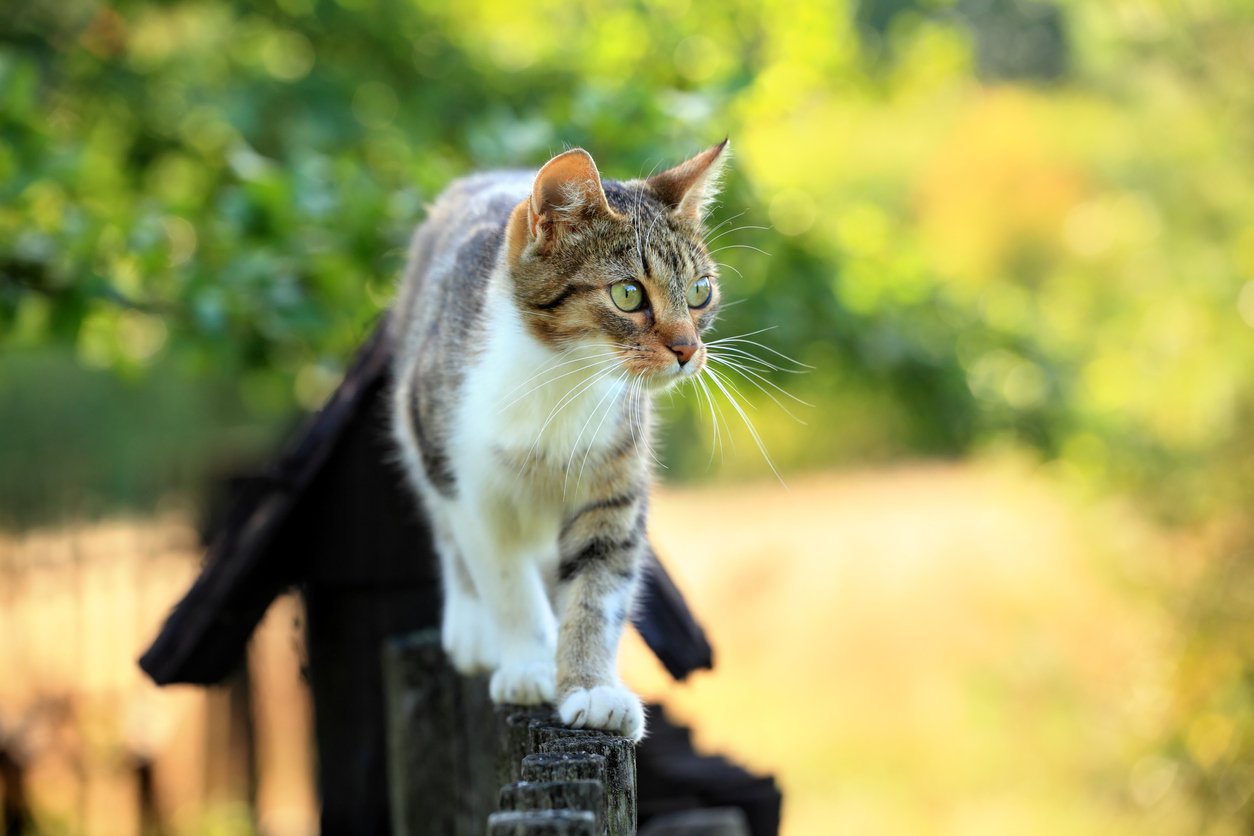
When your cat has a tail injury, it’s important to get it examined by a veterinarian. The sooner you can start treating the injury, the better chance you have of preventing further damage and seeing full recovery in your kitty. If you know what caused the injury and can prevent further incidents from happening, this could mean less pain for your beloved feline friend!
And a solution that helps tackle symptoms and prevention? Integricare’s TRI-ACTA for Pets and TRI-ACTA H.A.
TRI-ACTA H.A. for Pets
Our maximum strength formula is optimally designed to accelerate the formation of cartilage, minimize inflammation, expedite the healing process, and improve joint conditions.

Newsletter Signup
Subscribe to our newsletter to receive the latest news and exclusive offers.
.jpg?height=2000&name=Cliick_Integricare-DISPLAY-REVISEDV2%20(1).jpg)
Proactive & Therapeutic Joint Supplements
When given daily, Integricare joint supplements recover bone and joint injuries faster and help prevent mobility injuries from happening in the first place.

